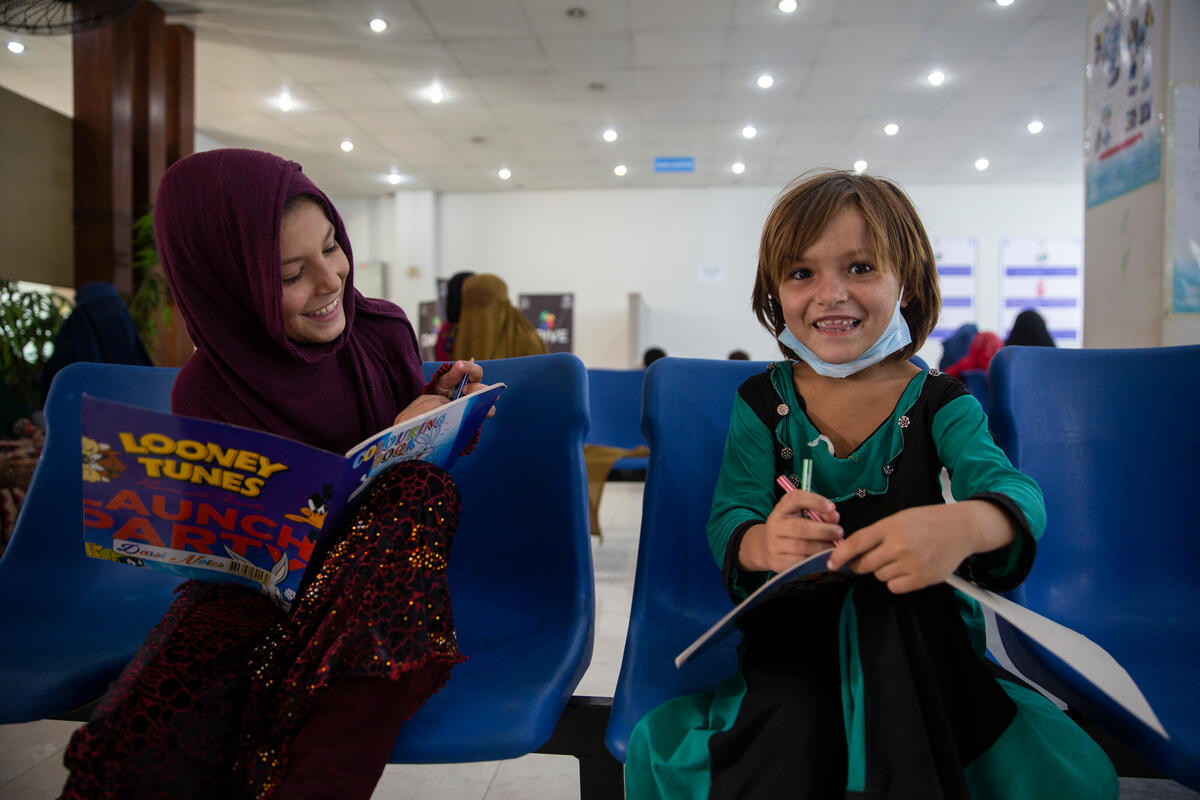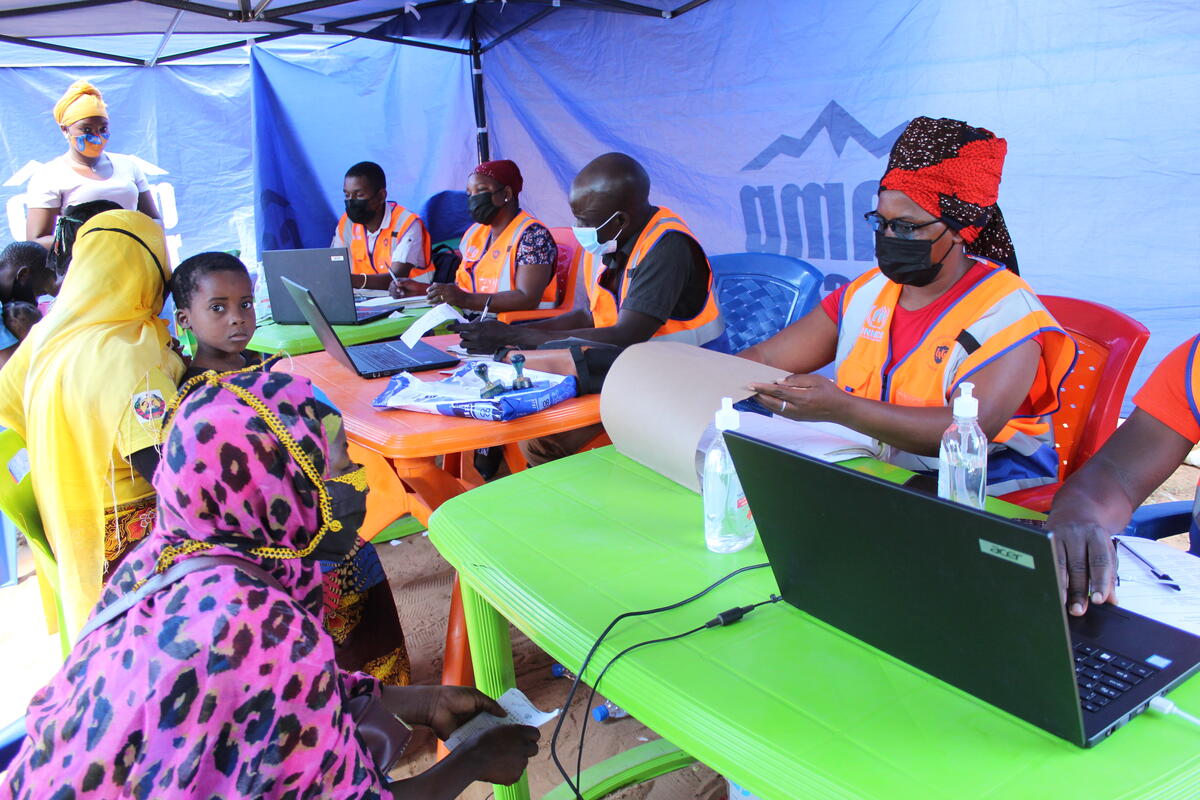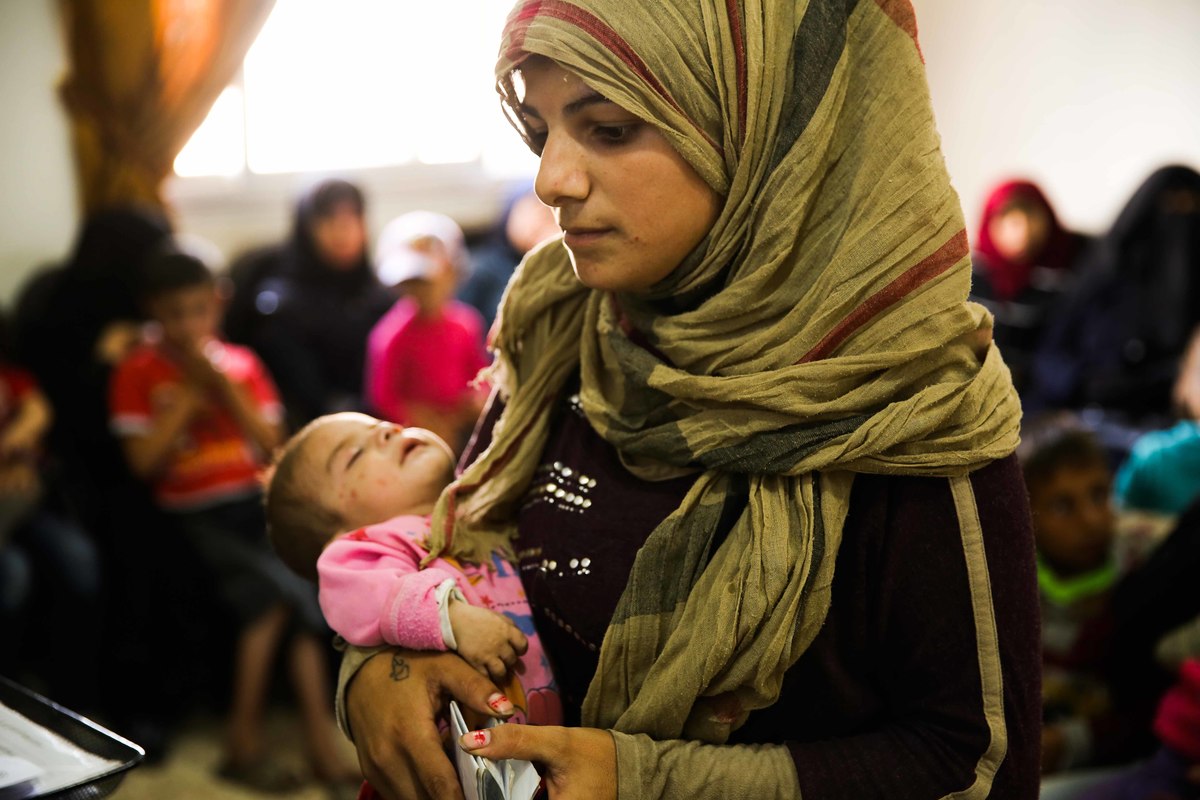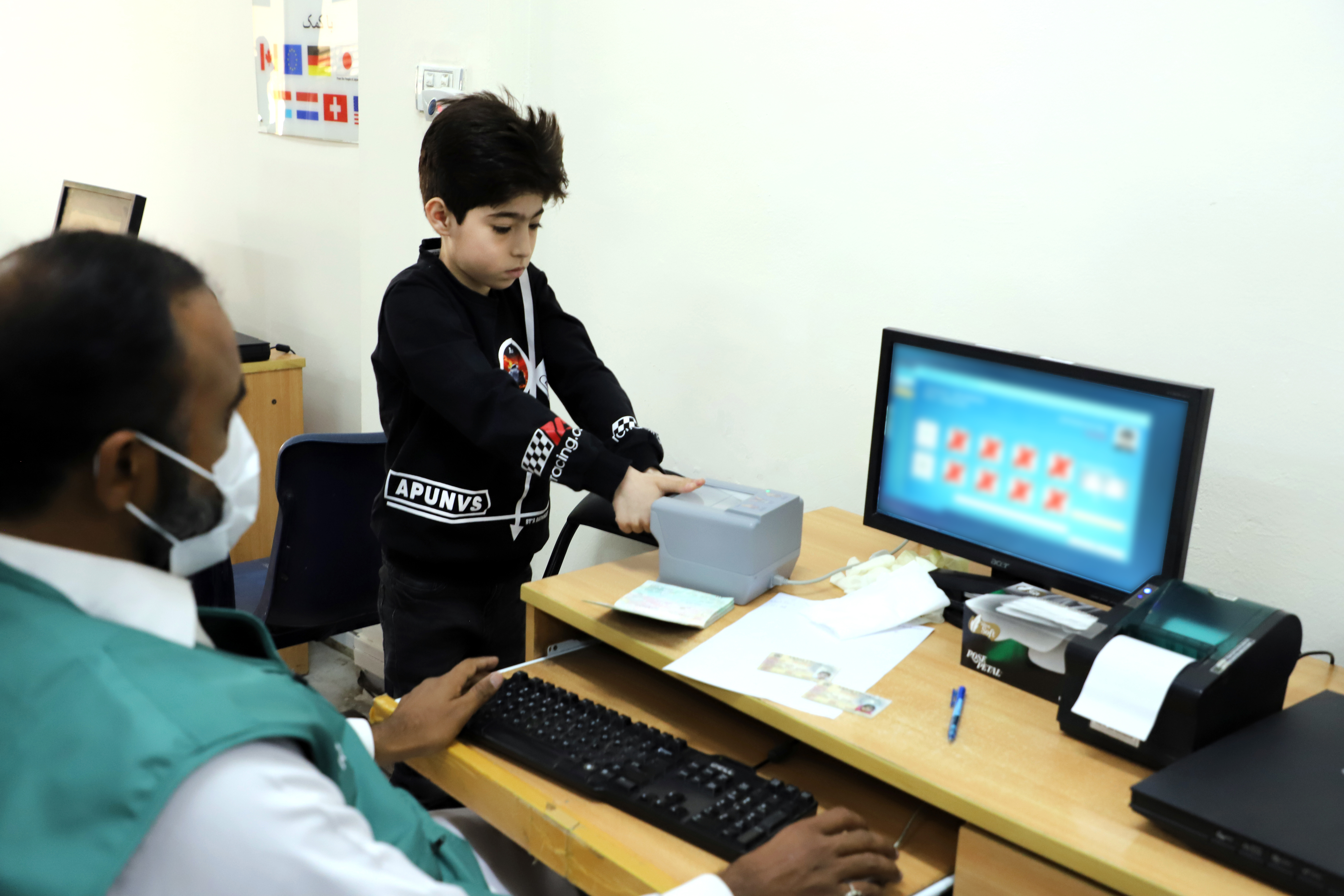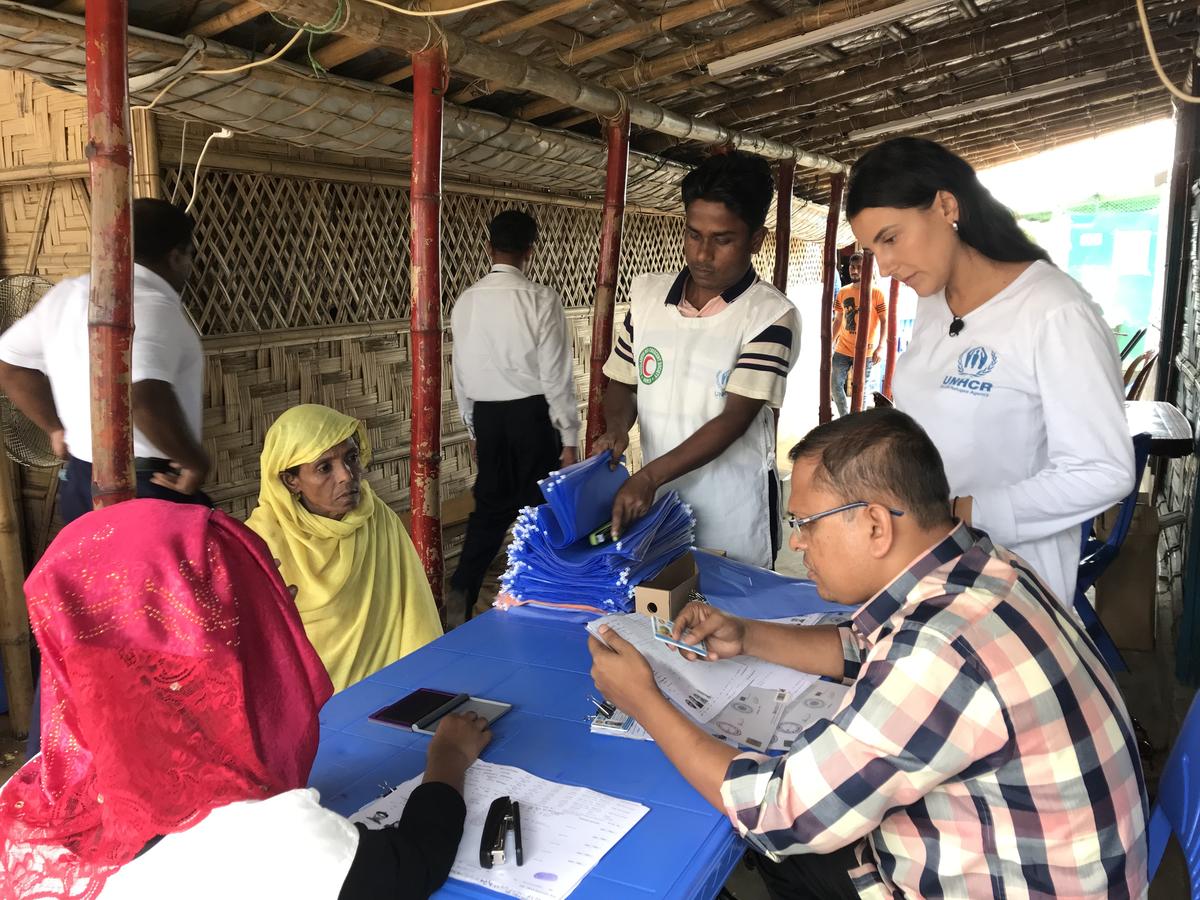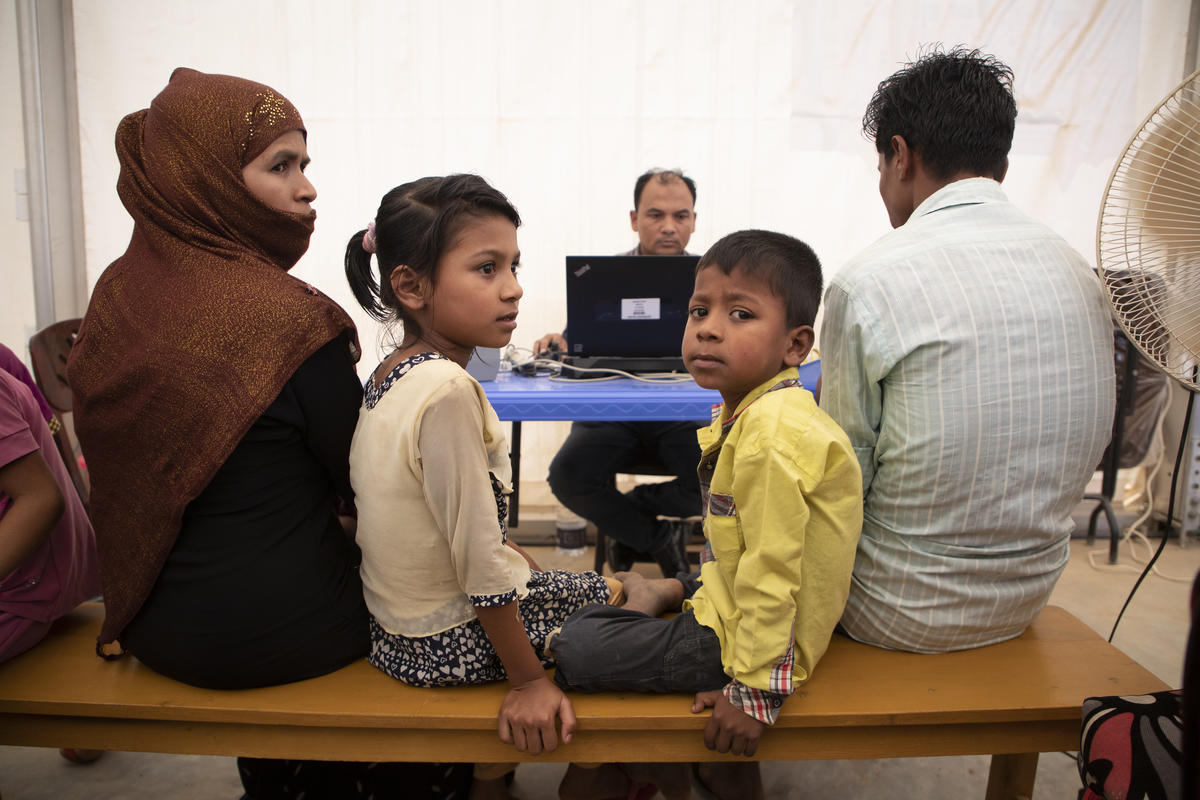UNHCR and Nepal launch census of refugees in eastern camps
UNHCR and Nepal launch census of refugees in eastern camps

KATHMANDU, Nepal, November 15 (UNHCR) - The government of Nepal and the UN refugee agency will soon have better information to serve an estimated 106,000 refugees in camps in eastern Nepal, thanks to a census that started on Wednesday. The joint exercise will be conducted in seven camps over the next few months, starting in Jhapa district's Beldangi I camp.
"Reliable census data will help the government of Nepal and UNHCR to provide better protection, security and support to the refugees on the basis of improved documentation on 'who is who' and 'who is where,'" said Abraham Abraham, UNHCR representative in Nepal.
"The importance of the census is that the data collected will be used to establish individual profiles for improved planning, delivery and monitoring of assistance and also to identify and document particular needs of individual refugees," he added.
Abraham said it should be of use not only to the government and UNHCR, but also to donors and the refugee agency's NGO (non-governmental organisation) partners as well as the refugees themselves. The exiles, mostly originating from Bhutan, recognise the value of the census. "We never had an identity card and it was difficult at times, but now with this census I will have one," said Hari Subba, a refugee at Beldangi I. "It will be so helpful to us."
The Beldangi camp was a hive of activity on Wednesday, with refugees queuing up excitedly outside a large tent warehouse to take part in the census. Videos on social issues were broadcast to draw their attention while they waited to give their details. Volunteers wearing UNHCR caps patiently answered questions.
"I am very happy to come here for the census and hope that this activity will help to provide my family with better protection identification," said Sumitra Pokhrel, a mother of two deaf children. "It will be a great opportunity to correct and update our present data."
The census tent has the capacity to hold interviews with 20 families at a time, with desks separated by wooden partitions. UNHCR staff are using the new registration software programme, ProGres, to record full and accurate personal details and related information.
Most of the refugees arrived in Nepal more than 16 years ago and records on individual refugees are limited. Existing information needs to be validated, cross-checked, updated and recorded in a new database system. This census is being supported by donor countries such as Australia, Canada, Denmark, the Netherlands, New Zealand, Norway and the United States.
The most exciting part of the census for many of the refugees was when their photographs were taken. Thatch and bamboo huts near the interview tent were used as makeshift studios. The photographs will appear on identity cards.
The United States announced early last month that it was offering to resettle up to 60,000 refugees from Bhutan who have been living in camps in eastern Nepal. The offer, plus interest also shown by Canada and Australia, could help break the deadlock which has existed for many years in finding a positive and lasting solution for these people, UNHCR said at the time.
By Nini Gurung in Kathmandu, Nepal


